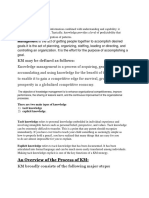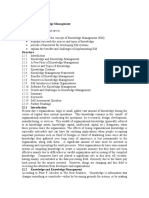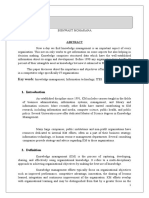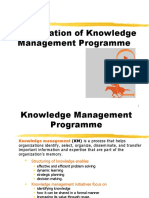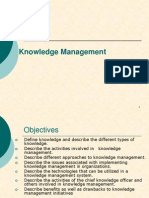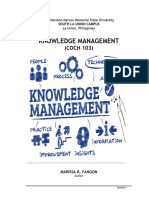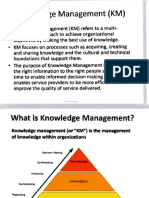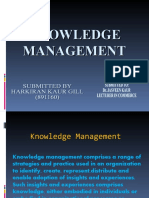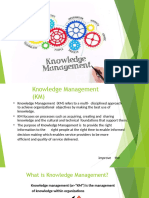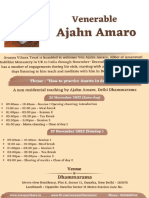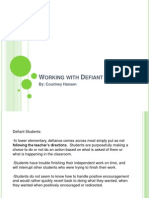0% found this document useful (0 votes)
93 views18 pagesKnowledge Management Systems Guide
Knowledge management is the process of creating, sharing, using and managing knowledge and information within an organization. It refers to a multidisciplinary approach to achieving organizational objectives by leveraging knowledge. Knowledge management systems help systematize and enhance knowledge sharing within and between organizations through the use of technologies like intranets and data warehouses. They provide benefits like improved knowledge distribution, greater information accuracy, less time spent searching for answers, and retention of knowledge as employees leave.
Uploaded by
Samy MwambaCopyright
© © All Rights Reserved
We take content rights seriously. If you suspect this is your content, claim it here.
Available Formats
Download as PPTX, PDF, TXT or read online on Scribd
0% found this document useful (0 votes)
93 views18 pagesKnowledge Management Systems Guide
Knowledge management is the process of creating, sharing, using and managing knowledge and information within an organization. It refers to a multidisciplinary approach to achieving organizational objectives by leveraging knowledge. Knowledge management systems help systematize and enhance knowledge sharing within and between organizations through the use of technologies like intranets and data warehouses. They provide benefits like improved knowledge distribution, greater information accuracy, less time spent searching for answers, and retention of knowledge as employees leave.
Uploaded by
Samy MwambaCopyright
© © All Rights Reserved
We take content rights seriously. If you suspect this is your content, claim it here.
Available Formats
Download as PPTX, PDF, TXT or read online on Scribd
/ 18
